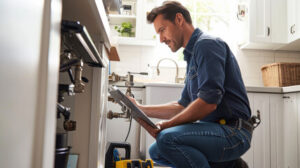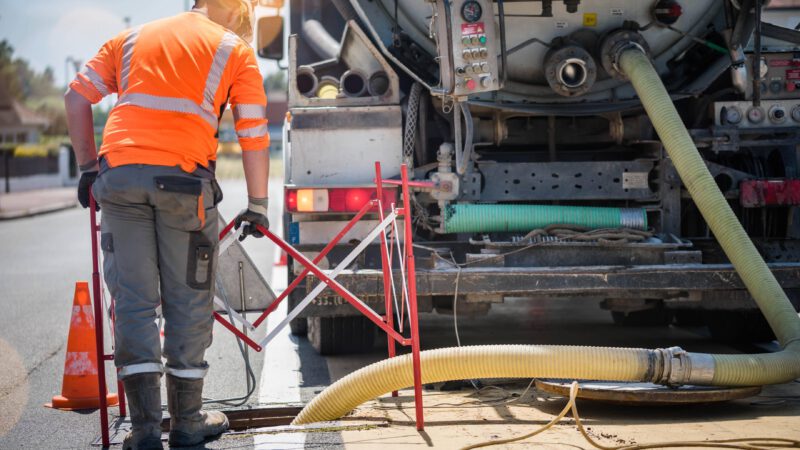A Comprehensive Guide To Residential Plumbing Services
A home’s plumbing system plays a vital role in delivering clean water and removing wastewater. While it is easy to take this important infrastructure for granted, a basic understanding of its components and functions empowers homeowners to perform routine maintenance and address issues promptly.
 From repairing leaky faucets to installing energy-efficient appliances, Plumbers In Shreveport offers an array of services. Read on to learn more about the basics of your plumbing system and how you can work with professionals to keep it in good condition.
From repairing leaky faucets to installing energy-efficient appliances, Plumbers In Shreveport offers an array of services. Read on to learn more about the basics of your plumbing system and how you can work with professionals to keep it in good condition.
Plumbing Basics
The plumbing system in your home is a complex network of pipes, fixtures, and appliances that delivers clean water and removes wastewater. While many homeowners take their plumbing for granted, a basic understanding of how it works can help you avoid common problems like leaks and clogs.
Residential plumbing systems consist of two separate subsystems: the supply system that brings fresh water into the home and the drainage system that takes used water out. Each of these is a collection of pipes, valves, traps, and vents that connect the various fixtures in your home and your public utility company’s water line, if applicable.
Your home’s water supply system begins with a main pipe that runs from the water meter to your house, or from a private well to your plumbing fixtures. The water is under pressure as it enters your home, so the plumbing system must include a series of valves to control the flow and prevent overflow in case of a leak or broken pipe. This includes a main water shut-off, or stop, valve located close to your meter that can be closed in the event of an emergency.
Once the water enters your plumbing fixtures, it will pass through what plumbers call a “bridge fixture” – think sinks, faucets, toilets, washing machines, and more – that filters out any waste before it exits through the drainage system. The drain system itself is not connected to the water supply system, so any problems with your plumbing in this area will likely affect only the fixtures themselves and not the underlying pipes.
The last piece of your plumbing system is a drain-waste vent (DWV) system that connects all of the drains in your home to the public sewer line. Typically, this is underground, but in older homes, it may be aboveground. The DWV system is important because it keeps hazardous waste and bacteria from entering the environment, and it also protects your home’s sewer lines from backups and other issues. This is another vital component of your home’s plumbing that can be protected with routine maintenance and by keeping up with your household’s water use.
Water Supply Line
The water supply line is the primary conduit that brings fresh water into your home, branching off to individual plumbing fixtures like faucets, shower heads, and toilets. Water service lines can be sourced from municipal water supplies or private wells, and are usually buried underground. This backbone of your plumbing network includes the main water shutoff valve (typically located near the street) that homeowners can turn off in case of an emergency or during a plumbing repair, as well as a water meter that helps you keep track of how much water you consume and enables accurate billing from municipal sources. Leaks in the water line can be problematic. They are often caused by corrosion, and they can lead to low or intermittent water pressure.
In most cases, water supply lines are constructed from copper or CPVC plastic tubing. Choosing the right material depends on several factors, including price, durability, and heat resistance. A plumber can help you choose the best material for your needs, taking into account your fixture count, location, and building classification.
Residential plumbing systems typically require cold and hot water supply lines that travel in pairs to each service outlet. Showers, faucets, and washing machines need both cold and hot water supply lines, whereas toilets do not require either.
Water pipes, service valves, and connecting fittings are commonly made of copper, brass, CPVC or PEX plastics, galvanized steel, or cast iron. It’s a good idea to stay up-to-date on the latest developments in pipe materials and technology, as new products may have an impact on your home or business plumbing system.
A residential plumbing system is composed of two distinct yet interconnected systems: one delivers clean, fresh water, while the other removes waste and drains it to a sewer or septic system. The water supply system is responsible for delivering fresh, clean water to every fixture in your house or business, while the drainage system handles waste and odors from your fixtures like toilets, sinks, and drains.
Water line problems may not always be apparent, especially since many of them are buried underground. However, if you notice any noises coming from your plumbing system, such as banging or whining sounds, it is time to call in a plumber.
Drainage System
The drainage system takes wastewater and dirty water from toilets, showers, tubs, sinks, and dishwashers and sends it to a sewer or septic tank. It does so using gravity, without the need for pumps. The drain pipes also contain traps to prevent waste odors from entering a home, as well as vents to keep air flowing through the plumbing.
When the system works as it should, you never notice it. But when it doesn’t, that’s when you need a residential plumber to come in and help. The most common problems are leaks and clogs. Leaks are usually easy to fix, but clogs can be a little more complicated. If left untreated, they can lead to flooding, water damage, and health issues.
A residential plumbing drainage system is made up of pipes, gutters, and drains that whisk away excess water to prevent floods, rot, mildew, mold, and structural damage in homes. It is also essential for preventing health problems such as sewage backups.
Typically, your home’s drains and sewer pipes are hidden in walls, under floors, and behind the walls. Because of this, they’re difficult to inspect and maintain. However, there are a few tools that professional plumbers use to get a closer look at the condition of these pipes.
They can insert a special CCTV drain camera into the pipes to see any cracks, fractures, blockages, or other issues. If they suspect that a pipe is blocked with grease, sludge, or tree roots, they can use a mechanical drain auger to break up the obstruction and clear the pipe.
Residential drainage systems can also include surface drains, which are shallow ditches that act as channels for run-off water. These drains are ideal for properties with sloped or hilly landscapes because they allow the water to naturally flow into the main drainage system. Alternatively, a sump pump can be installed to remove water from a property. Whether you need residential plumbing services for minor repairs or major renovations, we can help. Contact us today to discuss your needs and schedule an appointment. We offer free estimates on all of our work!
Water Heater
Your home’s plumbing system is a complex network of pipes, valves, drains, and more that quietly works behind the scenes to ensure clean water, proper waste removal, and safe heating. But this system is often overlooked — until something goes wrong. Understanding the basics of residential plumbing services can help homeowners take proactive steps to avoid major problems and keep their homes running smoothly.
Water heaters are the heart of your home’s plumbing system, ensuring that you always have hot water for bathing, washing clothes and dishes, cooking, and more. However, this large appliance can become a source of significant frustration and expense if not properly maintained and managed. In addition to determining the right type and size water heater for your home, plumbers can also assist with installation, repair, and maintenance.
When selecting a new water heater, it is important to understand the energy efficiency and performance ratings. For example, newer water heaters are designed to consume less energy while providing the same amount of hot water as older models. In some cases, this can significantly reduce your energy costs.
Depending on the type of water heater you have, it may be necessary to drain and flush the device annually to remove sediment buildup that can affect its efficiency and lifespan. In addition, it is recommended to install a drain strainer to catch debris and prevent its clogging.
Plumbing fixtures, like faucets, toilets, shower heads, and garbage disposals, can also experience a variety of issues. These include leaks, clogs, noise or vibration, and inefficient operation. Professional plumbers can diagnose and repair these issues quickly and effectively to save you time, money, and headaches.
In addition to regular maintenance and repairs, some plumbing services offer specialized options like water filtration systems, sewer line repair and replacement, and tankless water heater installation. By leveraging the expertise of these professionals, homeowners can make smart choices that will improve the quality of their home’s water, decrease energy consumption, and reduce environmental impact.

